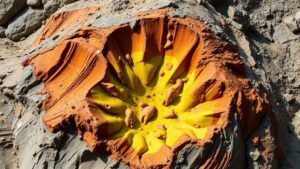Understanding Claim Ownership and the Basics of Gold Rights
Understanding Claim Ownership and the Basics of Gold Rights
The ownership of gold rights is a complex topic that intertwines legal, geological, and economic factors. Understanding who owns the rights to mineral deposits, especially gold, is critical for investors, miners, and landowners. This article provides an in-depth exploration of claim ownership and the basic principles governing gold rights.
The Concept of Claim Ownership
Claim ownership refers to the legal right to explore, extract, and profit from certain natural resources found on or beneath a specific piece of land. Claim rights can differ significantly based on jurisdiction, type of land (private vs. public), and existing agreements.
- Types of Claims: Generally, there are two types of mineral claims: patented and unpatented. Patented claims grant the holder ownership of both the land and the minerals beneath it, while unpatented claims allow the holder to extract minerals but not to own the land.
- Regulatory Framework: In many jurisdictions, claims must be recorded with the appropriate governmental body to establish ownership officially.
In the U.S., for instance, the General Mining Act of 1872 allows individuals to stake mining claims on public lands. But, the owner must meet certain requirements and fees to keep their claims active.
Gold Rights and Legal Framework
Gold rights are often governed by a patchwork of laws that vary significantly across countries and regions. Key components include:
- Mineral Rights vs. Surface Rights: In many jurisdictions, mineral rights can be separated from surface rights. This means that someone can own the surface of a property while another entity owns the minerals underneath.
- Permits and Environmental Regulations: Extracting gold typically requires various permits and adherence to environmental laws, which protect local ecosystems from interference.
For example, in Canada, the provincial mining regulations necessitate a comprehensive assessment to evaluate the environmental impacts of exploration and extraction before issuing permits.
The Staking Process
Staking a mining claim for gold involves several critical steps:
- Research: Prospective claimholders must conduct geologic surveys and research claim records to identify areas with potential gold deposits.
- Filing Claims: The claim must then be filed with the relevant mining authority, often accompanied by a mapping of the intended claim area.
- Maintaining Claims: Once a claim is staked, regular filing of annual reports and payment of maintenance fees is usually required to keep the claim active.
In Nevada, for example, a miner must file an annual fee of $155 per claim to maintain an unpatented claim, which emphasizes the importance of fiscal diligence in the mining process.
Real-World Applications and Case Studies
Understanding gold rights and claim ownership has real-world implications. Consider the high-profile case of Goldcorps Peñasquito mine in Mexico. The company navigated complex relationships between government entities, local communities, and other stakeholders to secure the right to extract valuable minerals. r success illustrates the importance of effectively managing claim ownership and navigating regulatory frameworks.
Alternatively, the controversy surrounding the Pebble Mine project in Alaska highlights significant opposition concerning environmental and indigenous rights, showcasing the intricate balancing act that miners must perform between profits and responsibility.
Challenges and Considerations
The field of gold rights and claim ownership is rife with challenges. Some of the notable issues include:
- Disputes Over Claims: Conflicts can arise between claimants and landowners, or between competing claimants, leading to costly legal battles.
- Environmental Concerns: Mining activities often face scrutiny due to their environmental impact, leading to increased regulations and potential project delays.
For stakeholders in the gold mining industry, it is crucial to remain informed about applicable laws and to engage in transparent practices to mitigate disputes.
Conclusion and Actionable Takeaways
Claim ownership and gold rights are foundational elements in the mining industry that dictate who can access, explore, and profit from mineral resources. Comprehending the underlying legal framework, the staking process, and the potential challenges is essential for all stakeholders from investors to mining companies.
- Before acquiring mining claims, conduct thorough research on local laws and regulations.
- Maintain accurate documentation and filings to secure legal ownership of claims.
- Engage with local communities and environmental agencies to foster good relationships and minimize disputes.
By paying close attention to these critical aspects, stakeholders can navigate the complexities of gold rights and claim ownership effectively, leading to sustainable practices and responsible mining endeavors.



